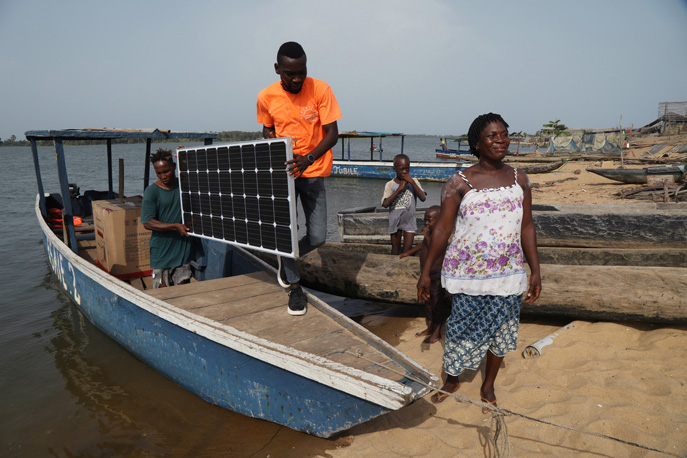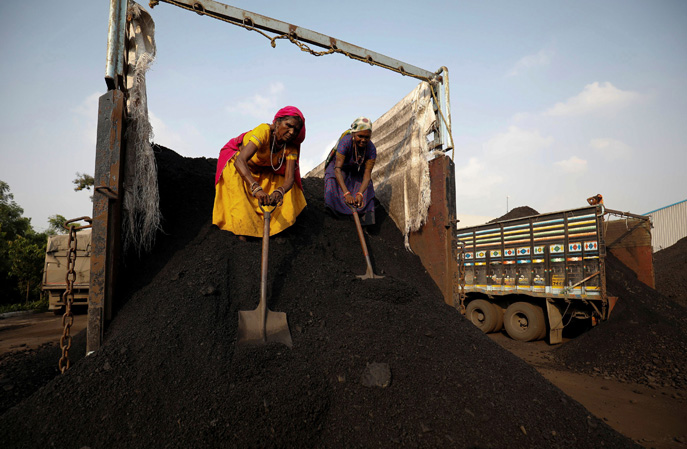In 2022 the focus will shift to implementation, but all eyes will be on the U.S., says Angeli Mehta
It’s been more than two months since COP26 ended, with 197 nations agreeing to work to close the gap between what’s been promised and what is required to limit the average rise in global temperature to 1.5 degrees Celsius (2.7F). But while last year was all about getting commitments, the question this year is: how quickly will nations get on with implementing the changes needed?
Geopolitical tensions, an energy crisis, and COVID-19 distract from the task, even as temperatures on land and in oceans, and greenhouse gas emissions, continue their relentless move in the wrong direction.
With damage in the United States from weather and climate disasters in 2021 put at $145 billion, President Biden still doesn’t have all Democrats onside to get his Build Back Better bill through Congress. It contains a raft of measures, including key climate legislation that experts say must pass to enable the United States to meet commitments to at least halve its emissions by 2030.
Its passage may also be crucial to maintaining international momentum. The prospect of the United States not being able to meet its 2030 commitment “could have a corrosive effect on the overall process … and it certainly would reduce the ability of John Kerry and others in the Biden administration to push other countries for more ambition,” says Alden Meyer, senior associate at climate think-tank E3G.

“It would validate the narrative that some in China have been using of ‘don't press us for more domestic ambition when you can't meet the targets you've committed to’,” Meyer added.
Rachel Kyte, dean of The Fletcher School at Tufts University, says the proposed funding also “represents a down-payment on the kinds of investments that we're going to have to make, to make our society more resilient”. The former United Nations envoy adds that in 2022, “we have to be able to walk and chew gum at the same time”, by implementing emissions cuts while ratcheting up adaptation measures.
At the same time, poorer nations urgently need structural financial support for their own transitions. In the run-up to COP27 in Egypt this year, more focus will be on loss and damage, the costs of coping with climate change incurred by those nations that didn’t cause it. Talks at COP26 in Glasgow failed to put anything concrete on the table, but climate-vulnerable nations have made it clear that the so-called “Glasgow dialogue” on funding for loss and damage should lead to the establishment of a facility at COP27.
If multilateral and bilateral public finance could de-risk private finance, ‘much larger sums could be moved’
There’s some optimism that the annual $100 billion climate finance promised to developing nations more than a decade ago could finally be achieved this year. But it’s the tip of the iceberg when it comes to helping countries like India, Indonesia and South Africa to decarbonise. Meyer has seen estimates that India alone might require $30 billion a year for a domestic shift from coal, and to meet its 500 GW non-fossil fuel target for 2030, half of which might have to be found externally.
Generating such sums will rely on bilateral aid but questions remain, he says: “Do the multilateral development banks – the World Bank, and others – really get on side and start dramatically shifting their portfolios; (and) what will it take to shift private-sector finance flows?” He adds that if multilateral and bilateral public finance could de-risk private finance, “much larger sums could be moved”.
There’s a crucial role here for the United States, European Union and Britain to coordinate, just as they did to create the $8.5 billion package announced at COP26 to help South Africa transition from coal. However, it’s not clear whether the package will provide grants or loans, and that will determine whether it really is the template for action elsewhere, as it was billed at Glasgow.
Indeed, there’s substantial dialogue to come on how the United States, EU and China all move ahead with their visions for supporting energy transitions in the developing world.

Furthest ahead with a policy roadmap for climate neutrality, the EU has developed a classification system for what will count as green investment. But debate continues over whether fossil gas and nuclear should be included. This internal row means the EU is “in danger of shooting itself in the foot if it says ‘we will not support you, Africa, to develop gas or nuclear power, but reserve the right to do it ourselves at home’,” suggests Kyte.
“That would add real tension to the United States-Africa dialogue on climate, on energy and, more broadly, geopolitically.” There needs to be detailed discussion on where it makes sense to expand gas infrastructure and where there is potential to leapfrog the fuel, she adds.
The EU has launched a 300 billion euro Global Gateway programme to rival China’s massive Belt and Road Initiative, while China is expected to shortly provide more guidance on what greening its BRI investments will mean.
Finance will also be at the forefront of discussions on biodiversity, with China set to host global talks on restoring and protecting the natural world in Kunming in late April.
There are plenty of opportunities for world leaders to meet and talk in the nine months that remain before COP27 in Sharm el-Sheikh, but to make progress there, it will be implementation that counts.
This article is part of the February 2022 issue of Sustainable Business Review. See also:
Brand Watch: Will 2022 be the year that sustainable consumption finally takes hold?
ESG Watch: Disclosure pressures to grow as investors push for transparency and a just transition
Society Watch: Indigenous people ‘critical to tackling biodiversity loss’ in crucial year
Mastercard’s Kloberdanz on why companies have to plug the ‘trust gap’ on nature
Made in Turkey: Arçelik’s CEO tries to flip the switch on CO2 emissions
COP26 Build Back Better Glasgow dialogue Global Gateway programme


